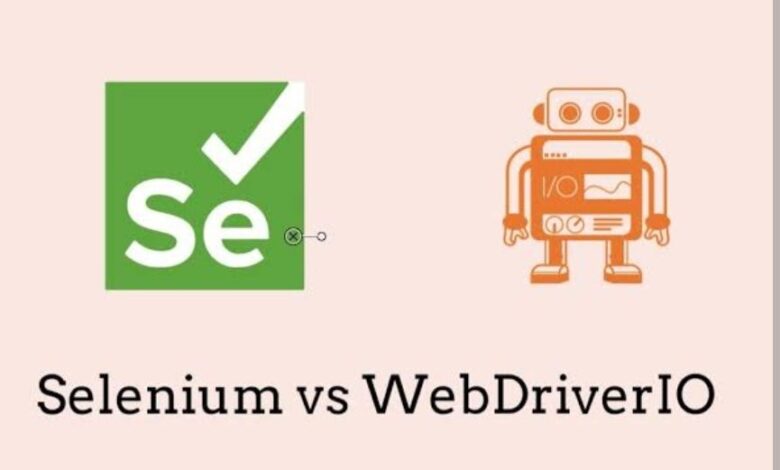WebdriverIO and POM: Structuring Your Tests for Handling Login Forms and Web Tables

Billions of people use the internet every day, indicating online interactions nowadays have dominated our daily lives, both on mobile and PCs. The first thing that users start with is a login page, a crucial component of many web applications that gives users access to personalized content, confidential data, and valuable services.
Therefore crafting intuitive and visually appealing login pages along with other web components like web tables requires effective testing to ensure that users can easily navigate the website over the internet and have a secure web experience. WebdriverIO, a robust framework along with Page Object Model (POM) helps to achieve this.
WebdriverIO with Page Object Model are effective testing techniques that help to interact with web elements while organizing test code for maintainability and reusability. Using them testers can also structure their test automation strategy, ensuring thorough testing of login pages and web tables.
In this article, we will discuss POM in WebdriverIO for creating more structured, efficient, and robust automated test suites for handling login forms and web tables. For that, it is essential to give an overview of what WebdriverIO and the Page Object Model are, what their challenges are, and best practices to build scalable test suites.
What is WebdriverIO?
WebdriverIO is a popular testing framework for automating JavaScript tests on web and mobile applications. It’s known for its support of both synchronous and asynchronous test execution, allowing testers to write tests that handle test operations like waiting for elements to load without resorting to complex control flow logic. Based on the WebDriver protocol, it provides a standardized method of controlling web browsers with just a few lines of code, thanks to its simple syntax.
Its simplicity and ease of use have made WebdriverIO a preferable choice for many testers and developers. It is an open-source tool owned by a non-profit OpenJS foundation. It is supported by a vast NodeJS community worldwide that helps the framework grow with new capabilities.
Why choose WebdriverIO for Automation Testing?
WebdriverIO provides many out-of-the-box features, making it a go-to framework for developers. Below are a few reasons why developers choose it for web automation testing.
- WebdriverIO is based on Web Standards that support cross-browser testing, allowing it to run tests on multiple browsers such as Chrome, Firefox, Internet Explorer, Safari, and Edge.
- Developers can write automated tests in multiple programming languages, including JavaScript, and TypeScript.
- It allows seamless integration with widely used developer tools like Chrome DevTools and Google Lighthouse.
- WebdriverIO can test web applications written in React, Vue, Angular, and Svelte front-end frameworks. It also supports the testing of native and hybrid Android and iOS mobile applications. Additionally, its support for parallel execution on virtual and real mobile devices is remarkable.
- The helper functions in WebdriverIO can be used on both WebDriver protocol and Chrome Devtools protocol, making it suitable for Selenium testing and Chromium-based automation. Adding helper functions helps build more complex commands and even create custom commands.
What is the Page Object Model?
The Page Object Model (POM) is a testing design pattern applied in the automation testing of websites and applications to improve the effectiveness and maintenance of automated tests. It represents the application’s different page components as objects in the test automation code. The main focus is separating code that interacts with the UI components and features of an application from the test logic.
Allowing changes to the UI without affecting the tests helps to avoid code duplication, making tests more maintainable, reusable, and easier to scale. This in turn enhances the robustness of the test automation code, increases collaboration, and minimizes errors thereby making it more programmer-friendly. To use POM, developers create classes referred to as “page objects. Each page object encapsulates UI interaction associated with a particular application page or component.
Key Components of the Page Object Model
The Page Object Model has several essential components that work together to streamline and enhance the automated testing process.
Page classes
Page classes represent various application pages or a specific section of a page. It encapsulates how to interact with the page’s elements in each page class. Furthermore, this encapsulation makes the test scripts easier to read, keeping the test logic and page-specific details distinct. It includes selectors to identify the HTML elements on the page and methods to define actions to be performed on the page and interactions with elements.
Element locators
Unique identifiers are referred to as element locators. They are used to locate and interact with HTML elements on a web page. This applies to dropdowns, text fields, login forms, web tables, and buttons. It uses various strategies such as CSS selectors, XPath expressions, ID attributes, and class names. Additionally, these locators are kept in page classes to make access and modification simple.
Test scripts
The test scripts include the actual steps of the automated tests. It invokes the relevant page classes’ methods rather than directly dealing with UI elements to perform actions and assertions on the web pages. They are responsible for defining and executing the test logic and validating the outcomes.
Understanding Page Object Model in WebdriverIO
Using POM in WebdriverIO requires no additional packages to create page objects. The latest version of WebdriverIO was designed with Page Object Pattern support, making it possible to build larger test suites using this pattern.
Moreover, POM in WebdriverIO is like using a map to navigate a website; it keeps things neat and clear. It organizes web page elements like buttons and forms into classes. This provides a way to handle commonly occurring issues like functional testing of several web pages including login forms and web tables, and structure the test code in a relatively standardized way.
Using the POM in WebdriverIO makes tests easier to write and maintain, helping structure the test code in a relatively standardized way. The goal of using POM is to keep page information away from the actual tests.
Advantages of using Page Object Model in WebdriverIO
Below are some major advantages of the Page Object Pattern that help testers understand precisely what they can achieve with this pattern while performing web automation testing.
Code Reusability across tests- POM helps developers avoid repeatedly writing the same testing procedures. For each page or element, they construct a “map” that can be used again and again.
Enhanced script readability- Another benefit of the Page Object Model is that testers can decouple their test code and page-specific code, like locators and interactions.
Code organization- The Page Object Model in WebdriverIO maintains order by separating page objects from test code when web pages and applications expand. This enhances script readability, making code more modular, reliable, and easier to understand.
Better collaboration- POM facilitates collaborative work among developers and testers by using a common language and structure for page objects. This helps ensure that everyone agrees on the application’s UI component and functionality. Independently working on creating and maintaining the automation code using the POM promotes efficient teamwork.
Reduced errors- Since nothing is written twice, the Page Object Model lessens the likelihood of mistakes appearing.
Improved test script maintenance- POM simplifies updates and modifications; it acts as an interface for the page under test. Whenever a button moves or the page layout changes testers only require to make one adjustment.
Strategies to implement POM in WebdriverIO for structure tests to handling login forms and web tables
Below are some techniques for implementing POM in WebdriverIO to make the framework more effective and maximize the benefits of the Page Object Model.
Structure tests with Page Objects
The Page Object Model is a design pattern that improves the readability and maintainability of the WebdriverIO tests. It involves creating separate page object classes that encapsulate the locators and methods specific to each web page.
Separating page information away from tests helps in keeping test suites clear and structured. This approach promotes code reusability, and reduces duplication, making the tests more resilient to UI changes.
Create reusable component tests
Creating reusable components for common interaction helps the tester save time and effort in the long run. For example, if multiple pages have login functionality, create a common login method that can be reused across different page objects.
WebdriverIO along with page objects allows the creation of reusable component tests. By encapsulating the locators and methods related to a specific component in a separate file, testers can create modular and reusable tests. This approach facilitates the maintainability of code and allows easy updates when changes in the component’s behavior or structure occur.
Enhance test maintainability and readability
POM separates the test logic from the code that interacts with the UI. This makes tests more maintainable, easier to scale, and more resilient to changes in the application’s UI. Implementing the POM in WebdriverIO helps enhance test maintainability and readability.
Page objects reduce the risk of inconsistencies and make tests more resilient to changes in the application’s UI. Descriptive method names and well-structured page objects make tests self-explanatory and facilitate better team collaboration.
Leverage meaningful selectors
Another key to effectively structuring the test using POM in WebdriverIO is using meaningful selectors. WebdriverIO provides a wide range of selectors for locating and interacting with web elements effectively.
Use selectors as constants to avoid hardcoding them directly into the methods. This improves readability and maintainability. Prefer using IDs and data attributes for selectors are faster and less likely to change than class names or text content. By leveraging and applying the power of these selectors, can precisely target the desired elements on a web page and perform actions like clicking, entering text, or validating attributes.
Utilize wait operations
Use proper wait for asynchronous operations this will ensure that the script waits for the action to complete before proceeding. This avoids issues with timing and ensures the page is in the expected state. When elements are not found or actions fail, implement error handling. Additionally to manage scenarios gracefully use try-catch blocks where required.
Review and Refactor
Regularly review and update the POM including selectors, methods, and logic to reflect changes in the application and ensure they remain clean and efficient. Continuously refactor the code to address any technical debt or inefficiencies and improve readability.
Integrate WebdriverIO with CI/CD Pipelines
Continuous Integration/Continuous Deployment is a game-changer for WebdriverIO testing. By integrating WebdriverIO tests into a CI/CD pipeline, testers can automatically run tests using Page Objects and data-driven tests to loop through different sets of data and catch issues early in the development cycle with each set.
Hence ensure that the POM-based test suite integrates well with (CI/CD) pipelines so that test results are reported and are visible in the CI/CD dashboard, including any failures or issues encountered.
Developers can also leverage cross-browser testing platforms like LambdaTest to integrate WebdriverIO tests with C I/C D pipelines to further enhance and scale their testing strategy. This cloud infrastructure of LambdaTest ensures that tests are executed automatically in different environments and that results are visible and actionable.
LambdaTest is an AI-powered test execution platform that enables testers to run WebdriverIO tests on a wide range of browsers and devices in the cloud, both manually and automated at scale. The platform allows performing automation testing in real-time over more than 3000 environments, real mobile devices, and browsers online.
Integrating LambdaTest with WebdriverIO, a custom implementation of Selenium WebDriver testers, can benefit from a comprehensive testing solution that ensures high-quality application delivery through continuous integration and deployment. In case you want to gain knowledge on what is Selenium, then you can explore the comprehensive guide on Selenium testing on LambdaTest Learning Hub
Conclusion
In conclusion, Page Object Pattern is one of the most important design patterns that improve the effectiveness of testing by providing various benefits in testing complex, large-scale applications where developers need to manage a larger suite. On the other hand, WebdriverIO is one of the top JavaScript test automation frameworks backed up by an active community of support. Using POM in WebdriverIO can help ensure that automated tests are maintainable, scalable, and robust.
When it comes to structuring WebdriverIO tests, the Page Object Model POM is a game-changer. Testers can use the Page Object Model (POM) effectively in WebdriverIO to handle login forms and web tables by adhering to the above techniques, thus transforming automation testing.
Keep an eye for more latest news & updates on Freshtoday Magazine!





